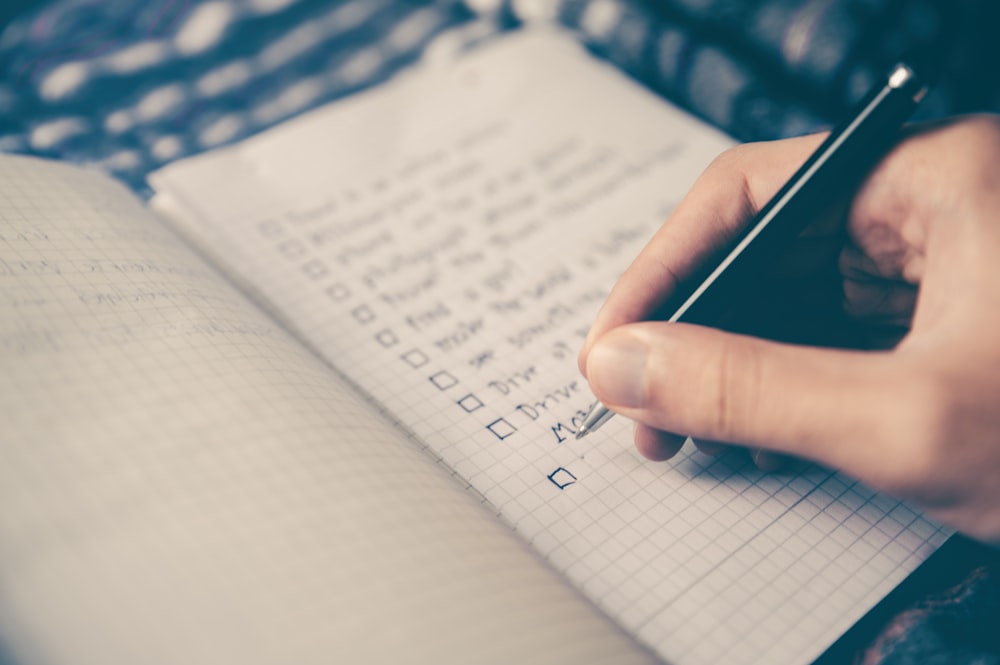
For the final post of our Write 31 Days series, I thought we'd take a look at posts that are popular but relatively easy to write, lists or guides. You can approach this type of post in a number of ways and you can provide almost any type of information. My favorite is to keep an ongoing list of resources that I can share with my quilting readers.
Very often while I am reading or blogging, I run across sites that I've not seen before. After reading or perusing the site, if I'm impressed with it, I'll add it to an ongoing list in my Evernote, which is where I keep notes and research for my writing. When the list has enough information, or the kind of content that I need, I can go to it for inspiration or use the list as the content itself. This gradual way of gathering information saves using up big chunks of time but still requires researching skills.
Another way to pull together enough information for this type of post is to do lots of intensive research. Just sit down at the computer and push through all of the sites and information that Google can spit out. It's time consuming--if you're selective--and mind-numbing. However, it's a doable project.
Let's say you've decided to create a list of sources that define, show, or teach ways to hang art. Easy enough, right? A search for "how to hang pictures" in Google gave me "About 67,300,000 results
Yes, that's the actual result that Google sent back [in larger, darker font for readability]. Granted there are multiples in many cases, but sifting through them all still takes time. More is not always better.
One question to consider is how much do you trust Google to return the best sites at the top of the search? If you've read anything about Google analytics, you know that being at the top has more to do with knowing how to play the Google game. Meaning some of the best articles may be quite far down the results list. For example, I found an article on hanging art in an older home all the way on page ten of the list. Anyone living in an older home would want to read this article. Additionally, nothing that I found in the previous nine pages was as good or interesting, yet I had to dig through pages and pages to get there.
There are several reasons that readers like this type of post. Someone else does the work, so they don't have to muddle through all those pages. If your readers trust you to provide accurate information in your list, you have to keep your promise by doing the work. Another reason that you may want to consider writing this kind of post is that readers appreciate the list format, which is easy to read.
In addition, you can include links that send readers directly to the page that they are looking for, not the home page or some other page on the website. Finally, if you do post a list or guide, include a short blurb that is direct, short, and informative so that your readers can decipher what they need quickly and easily. Both of these provide information that readers need and appreciate.
 |
| Photo Credit: Glenn Carstens-Peters @glenncarstenspeters |
What can you include in
a guide in your niche?
·
tools
·
online sources
·
books
·
how-to info
·
software
·
your favorites
·
life hacks
·
blogs/bloggers
·
free photographs or
graphics
·
things to avoid / what
not to do
Let's define the difference between a list and a guide. A list is more generalized and may not provide additional information. It answers one question. A guide, on the other hand, is specific and points the reader to more information, either answering several questions or pointing to places where that information can be found. "Tools I Use" is most likely a list, but "Where to Find the Tools I Use" can be a guide if it includes shops, stores, and online places to make purchases. The best title for your readers, "A Guide for Finding the Tools I Use." This last title tells the reader specifically what to expect from the post and meets some suggestions for improving your SEO through Google analytics.
One last suggestion is to consider whether to use bullets or numbers on your list. Bullets imply that all the items on the list are of the same importance. Numbers provide a hierarchy, or order, from most to least importance. If, however, you state the number of items in your title, you might want to number the items so that readers can easily keep track of where they are in the list.
Lists and guides are especially popular because they are quick, easy to read and provide important information. Be very choosy in putting together your list and you'll find that readers will quickly consider you an expert in your niche. Title your posts so that readers can quickly decide that they want to peruse your article. Finally, choosing between numbers and bullets is another way to help your readers. While they take a great time for researching, guides are smart, highly appreciated posts.





































